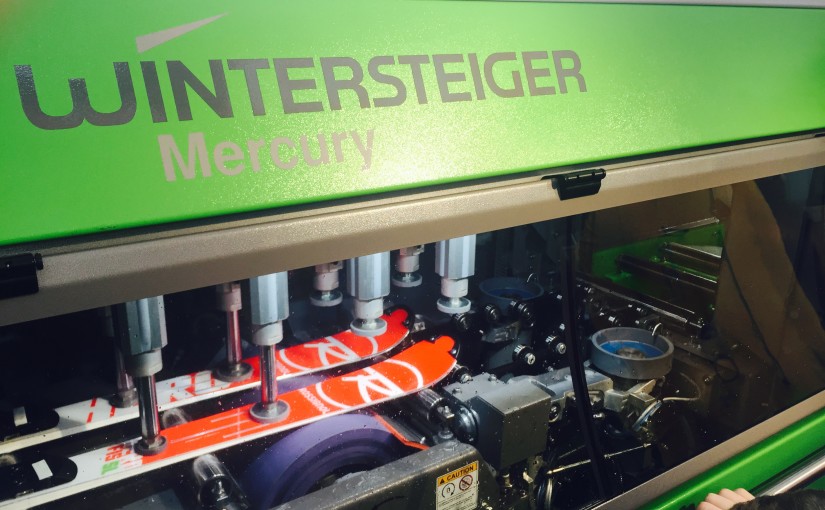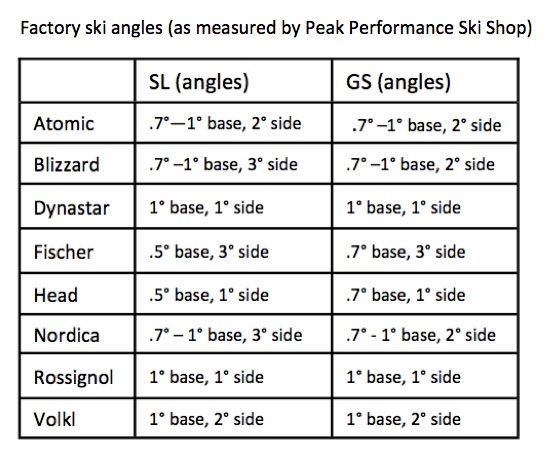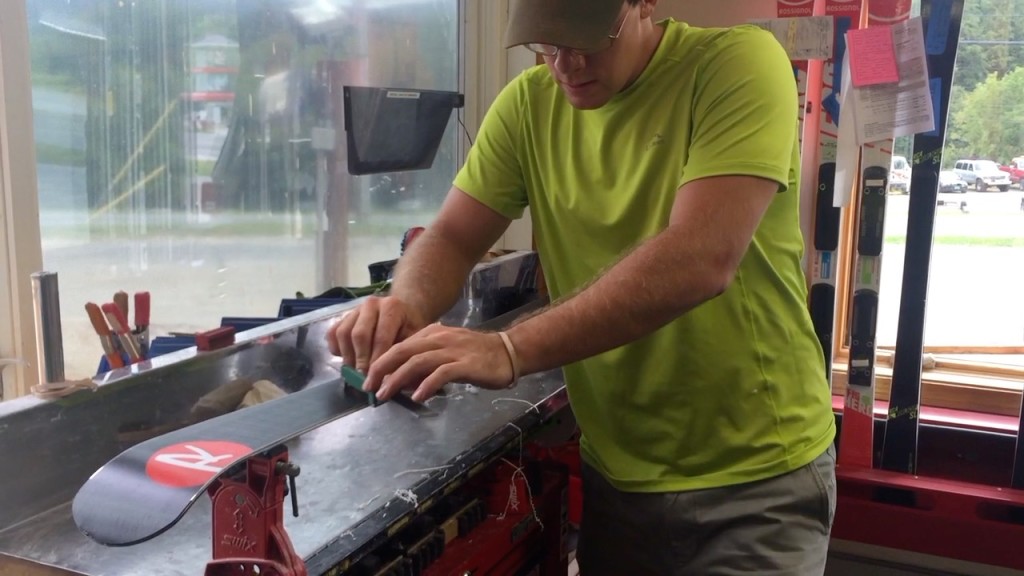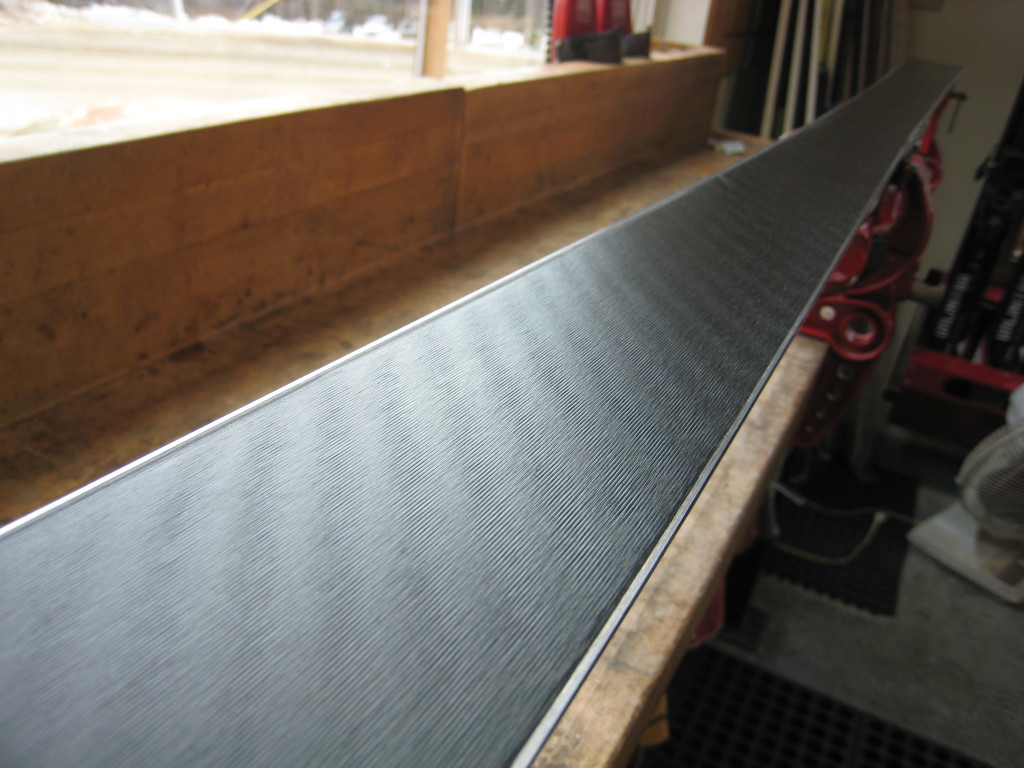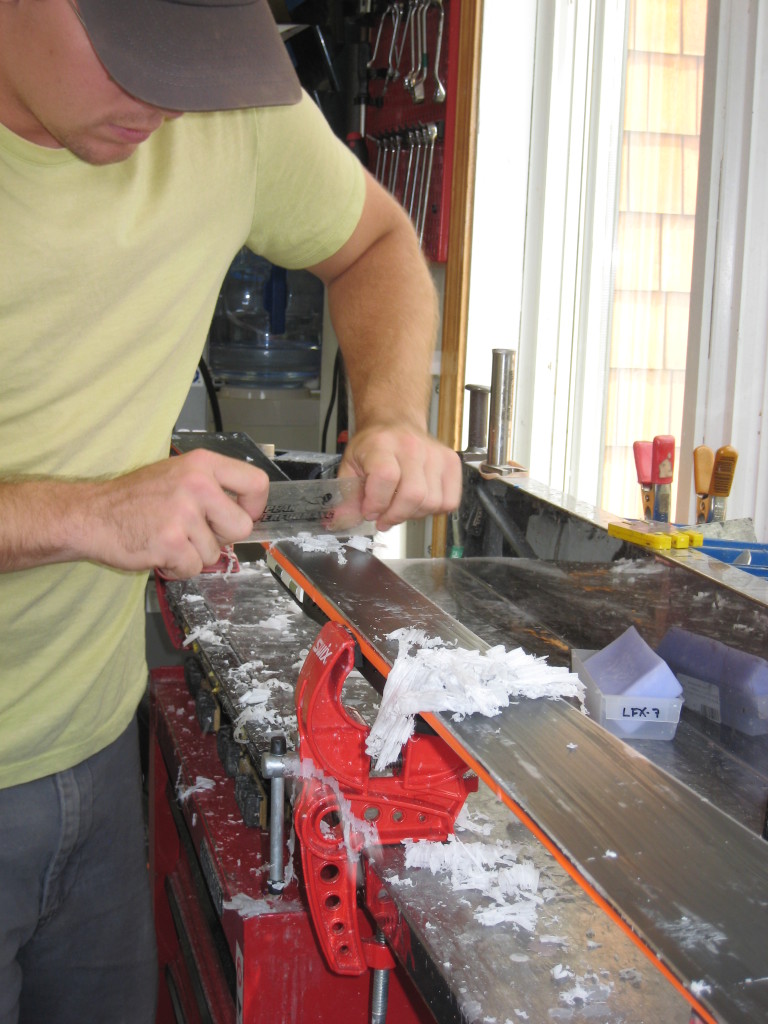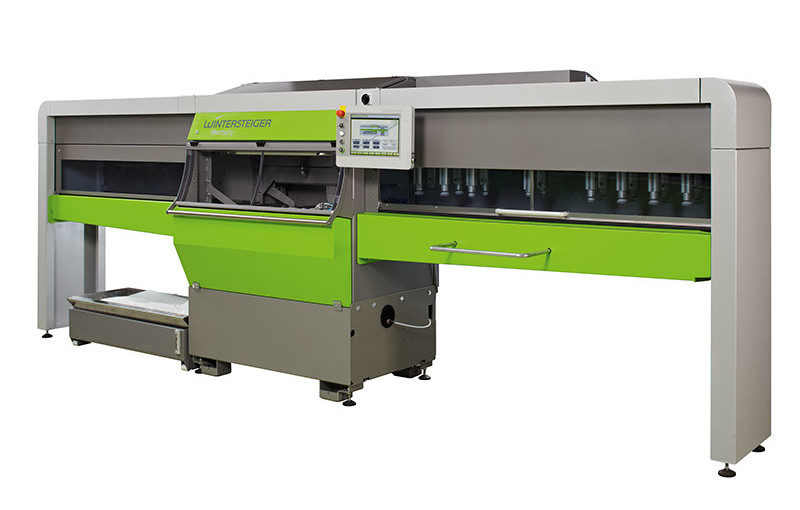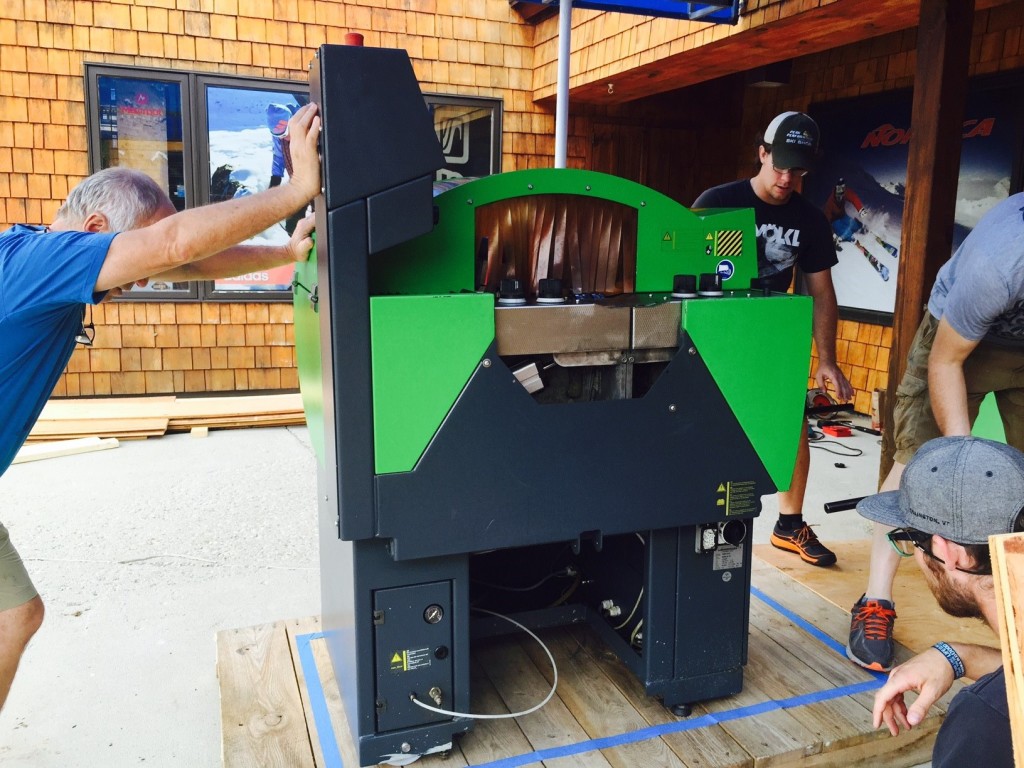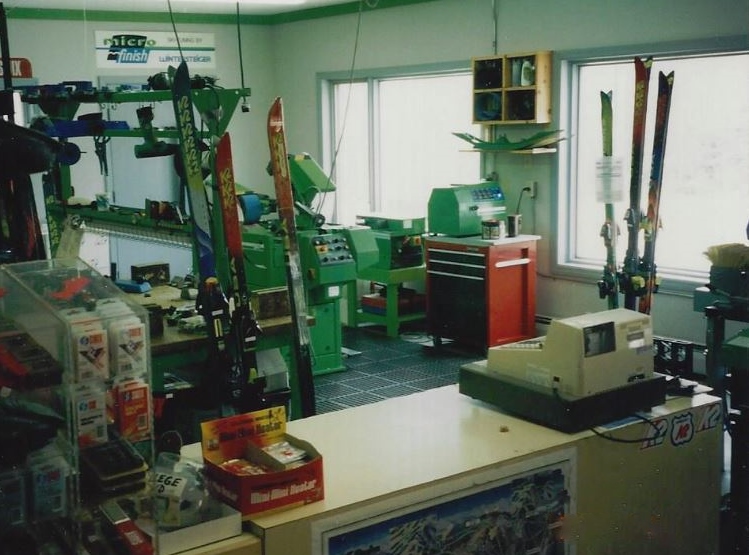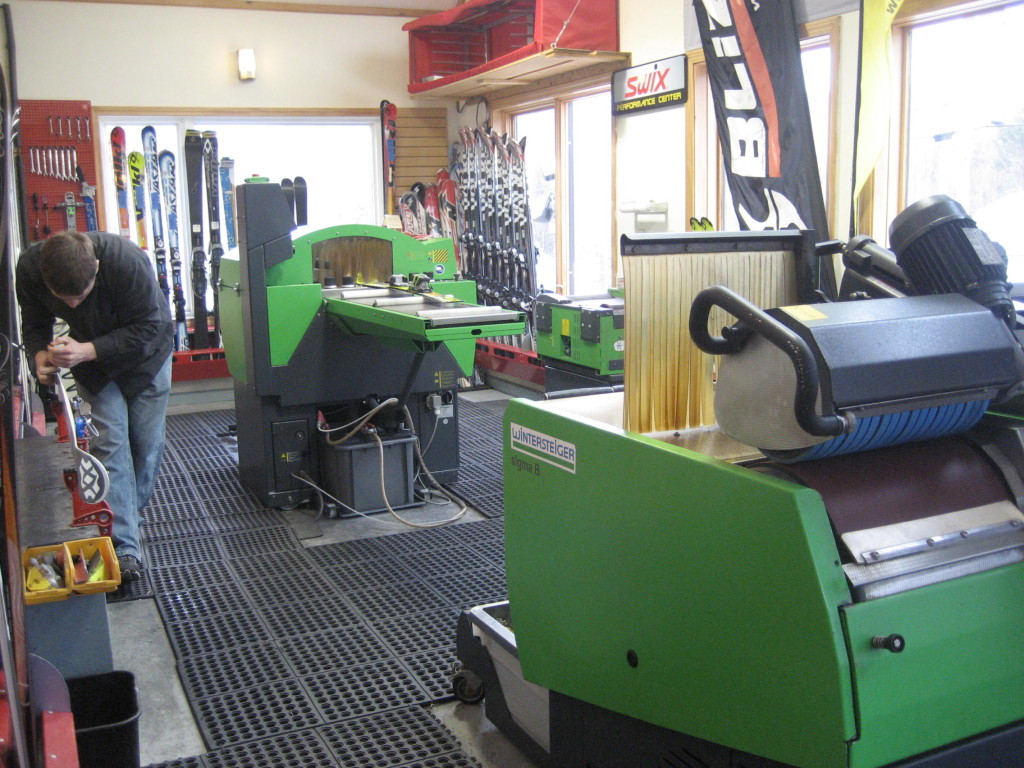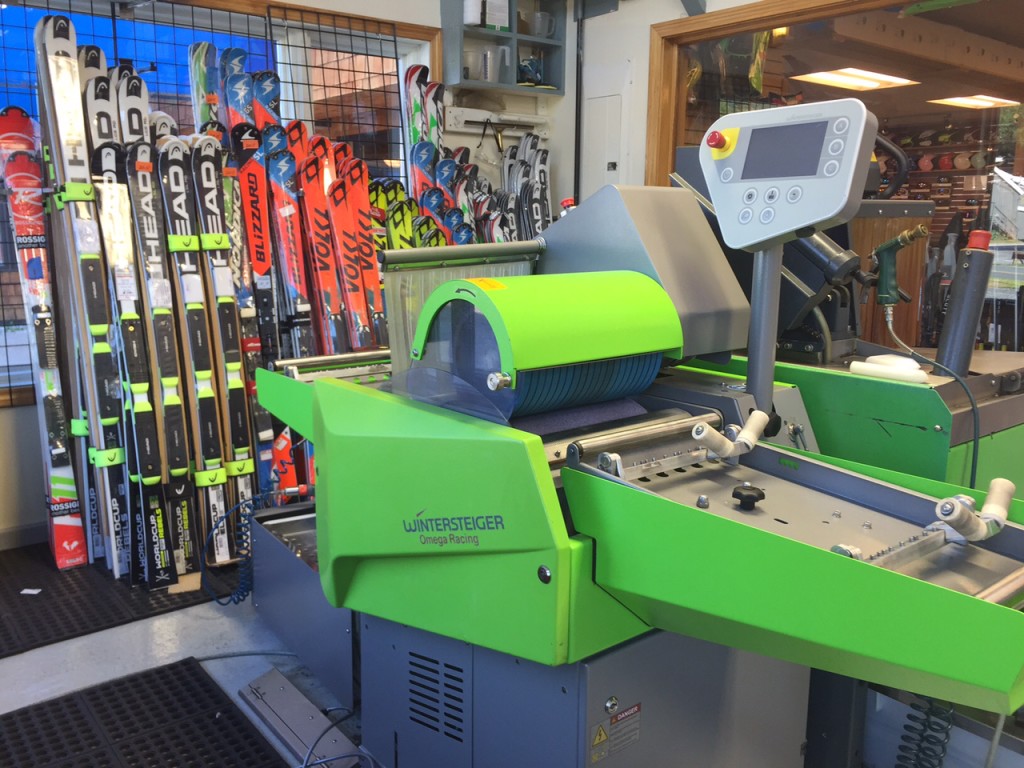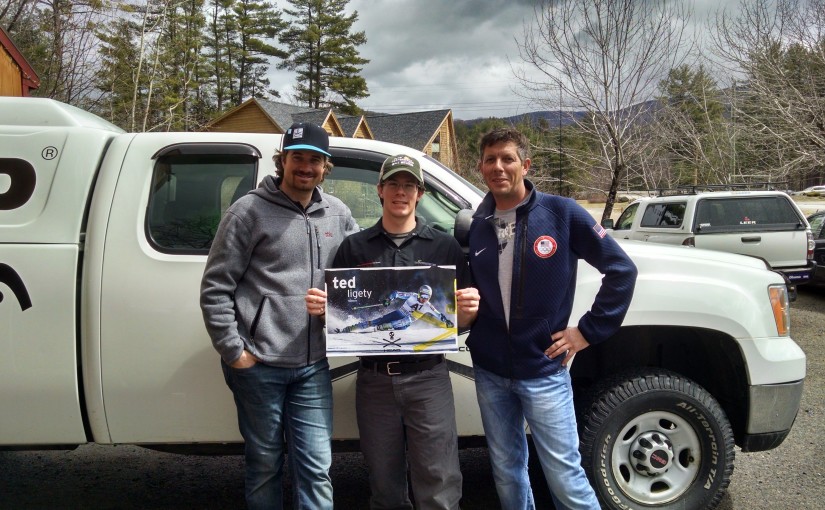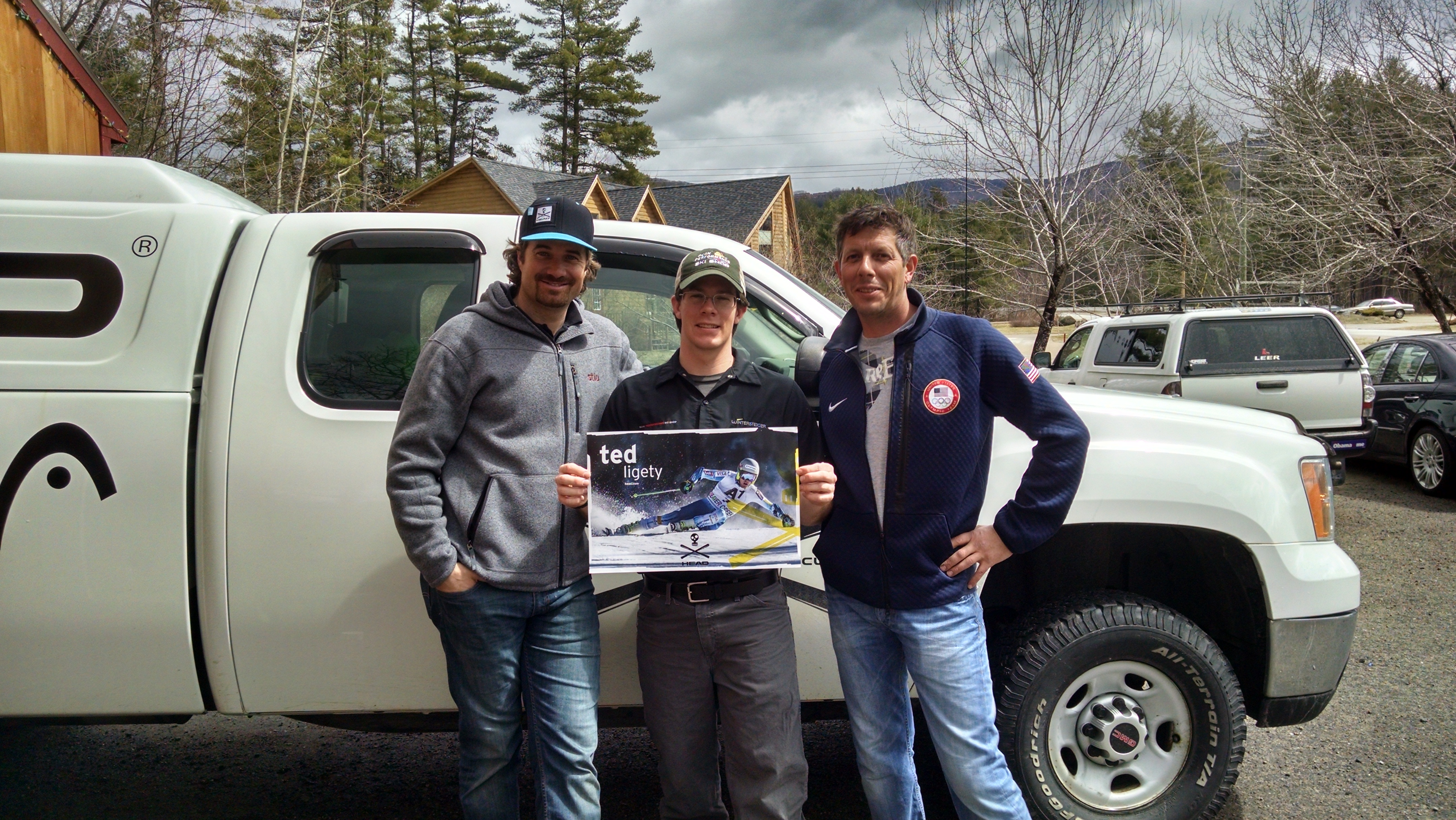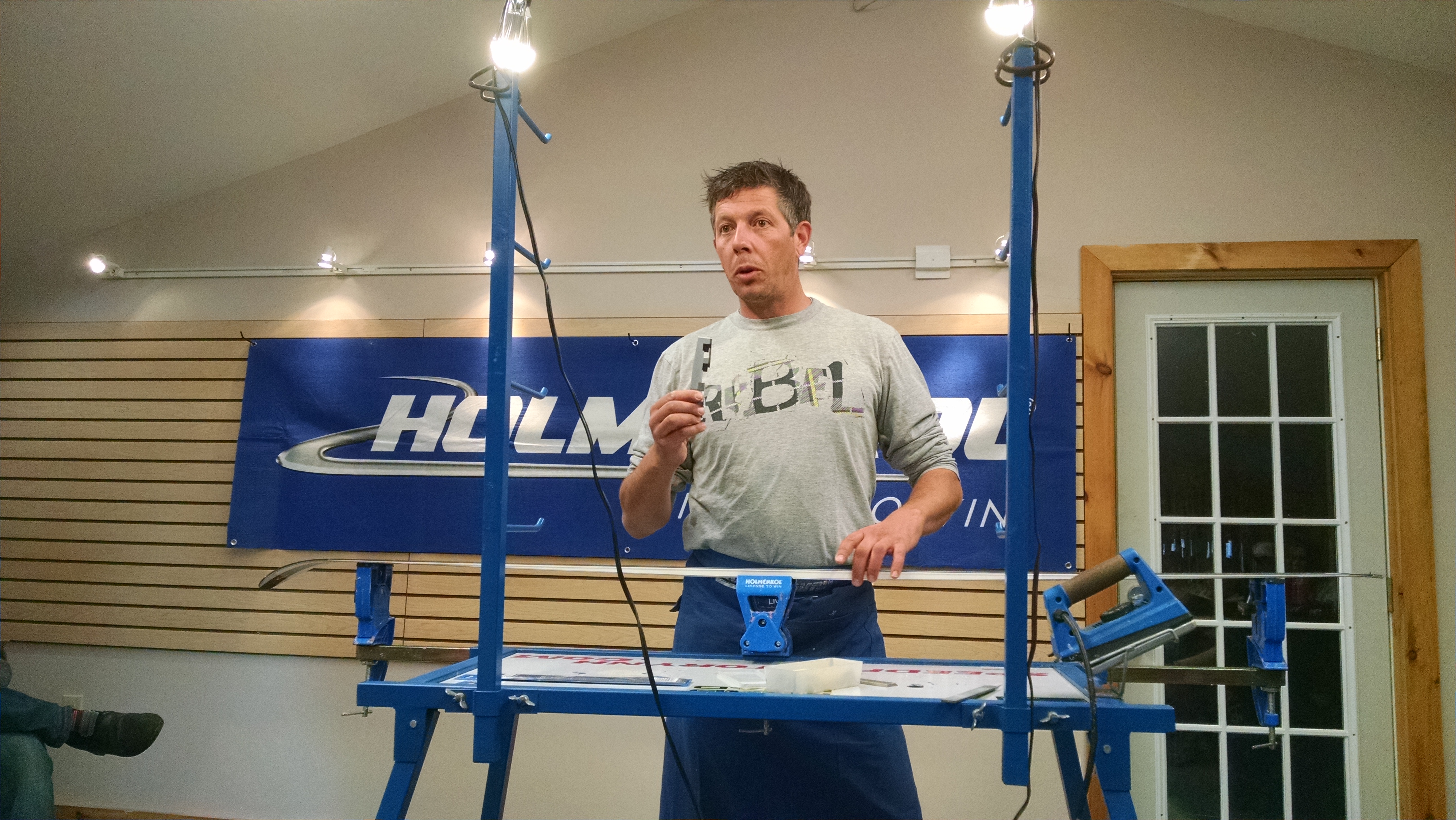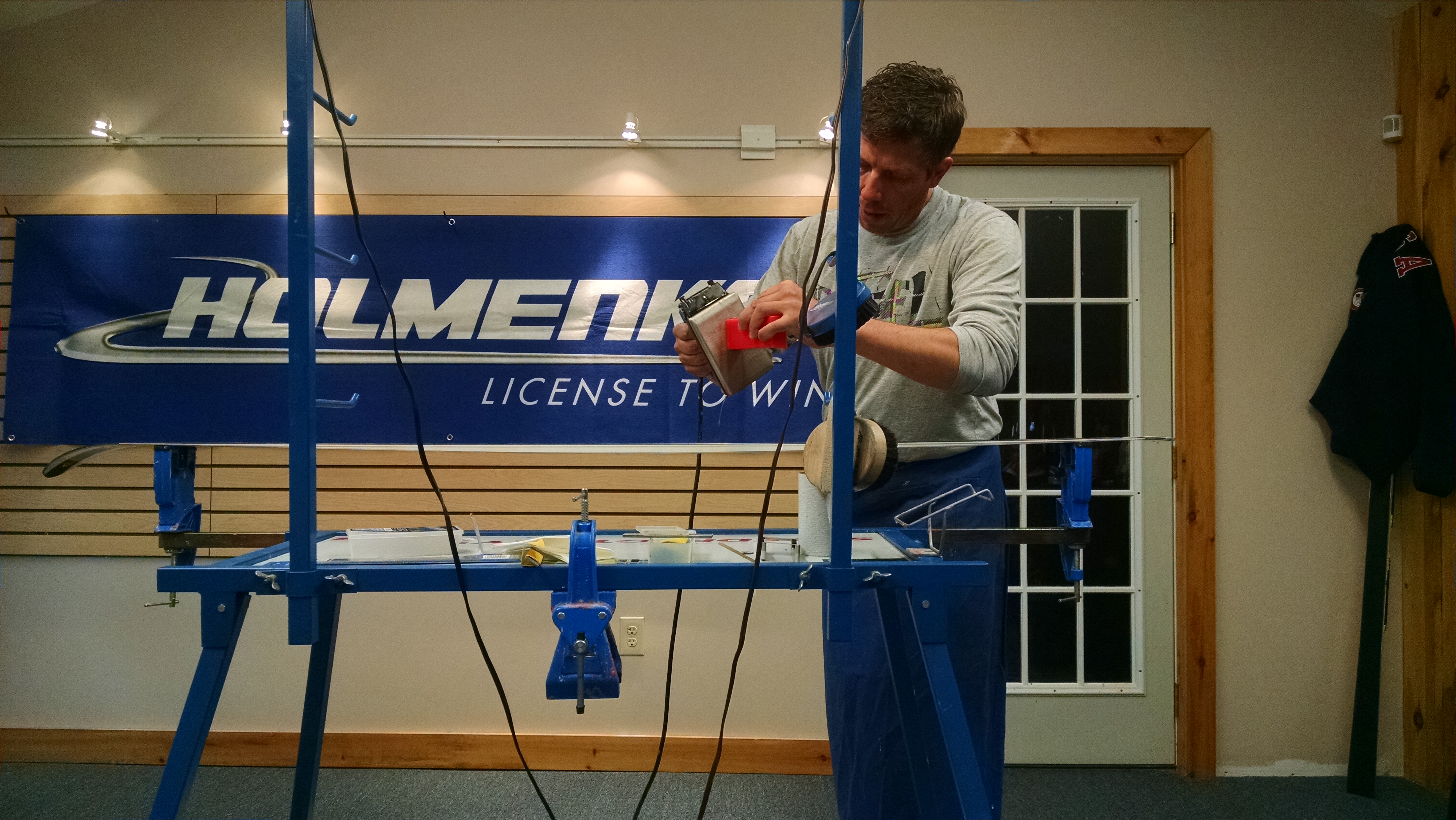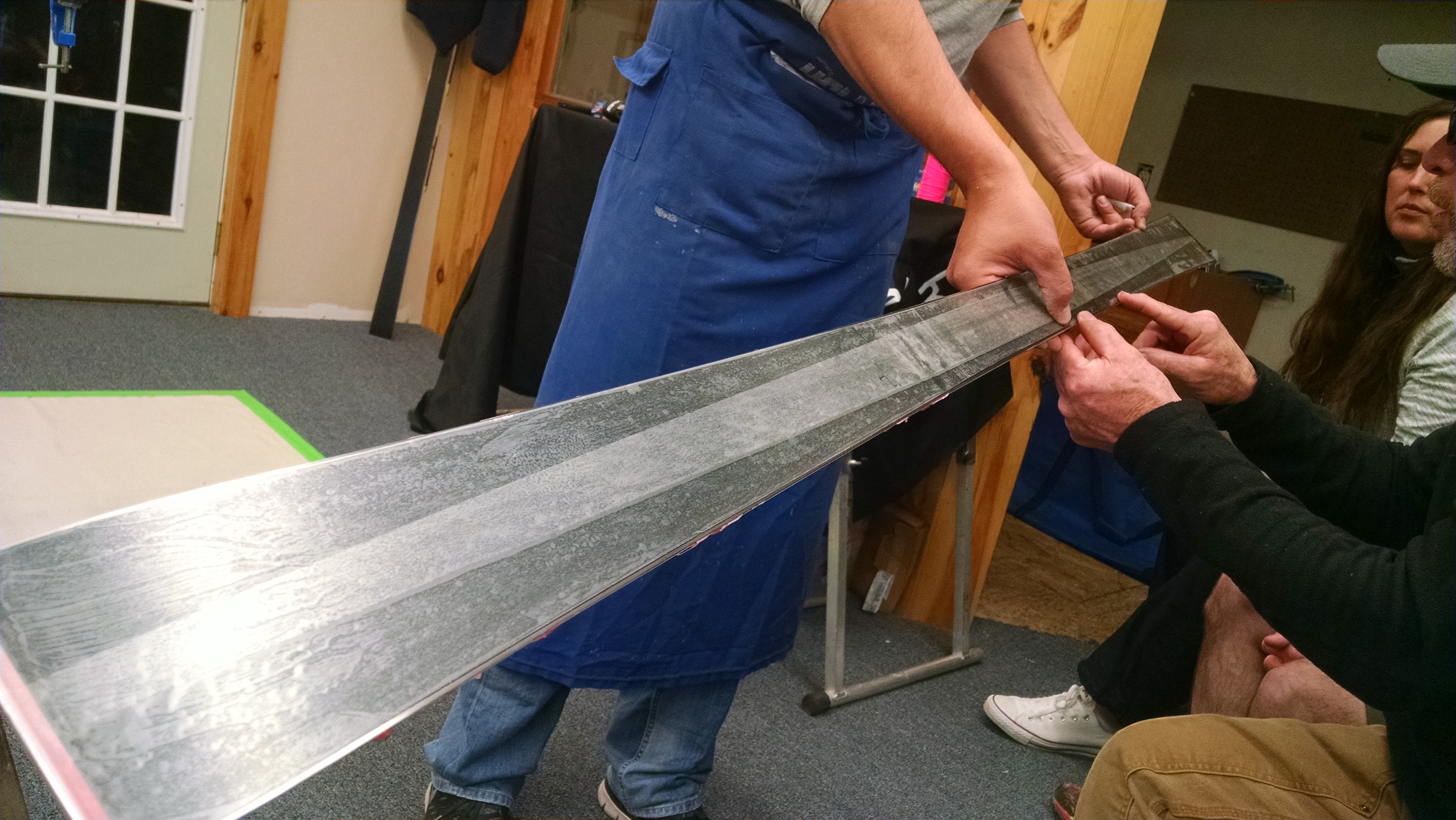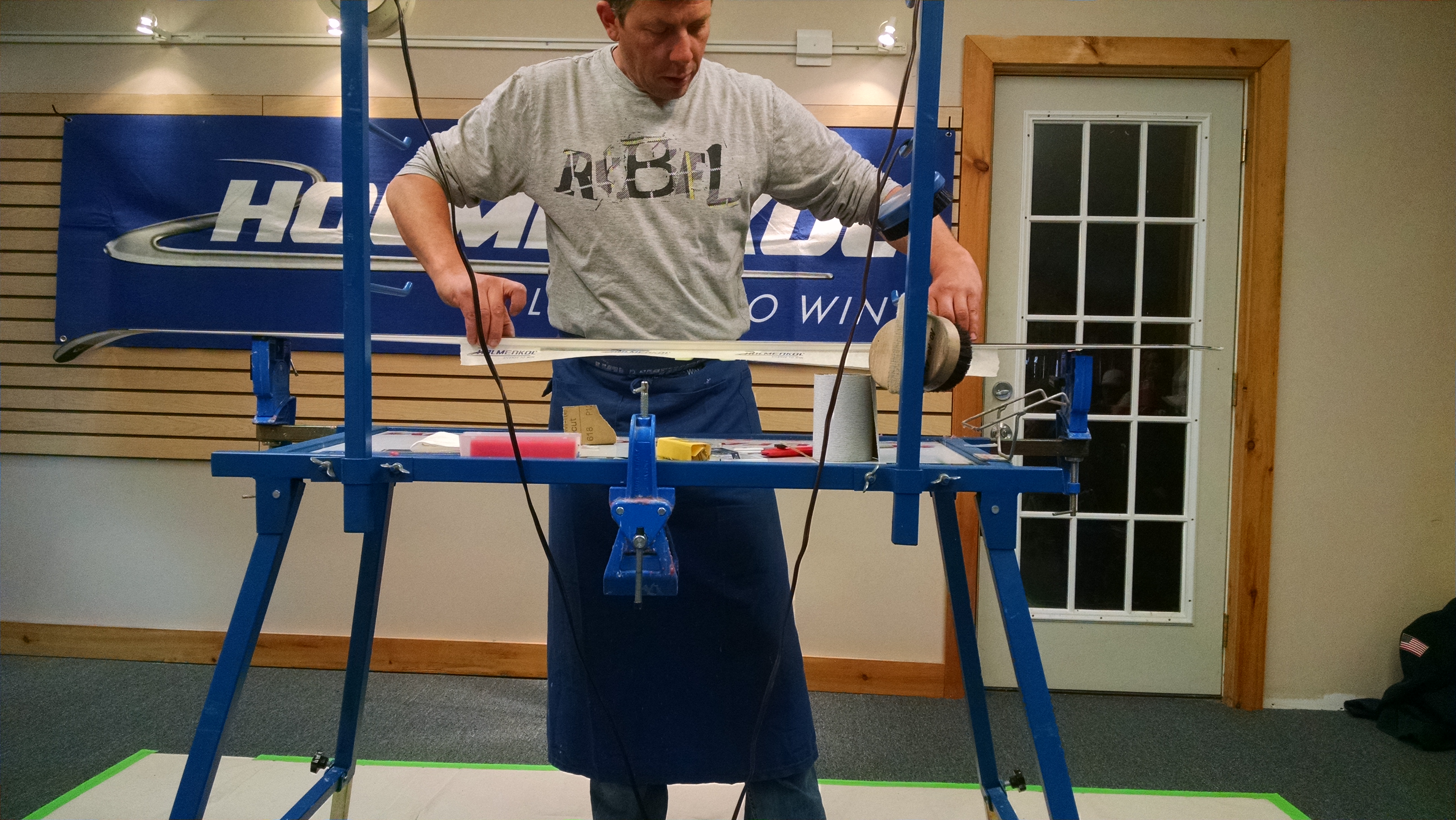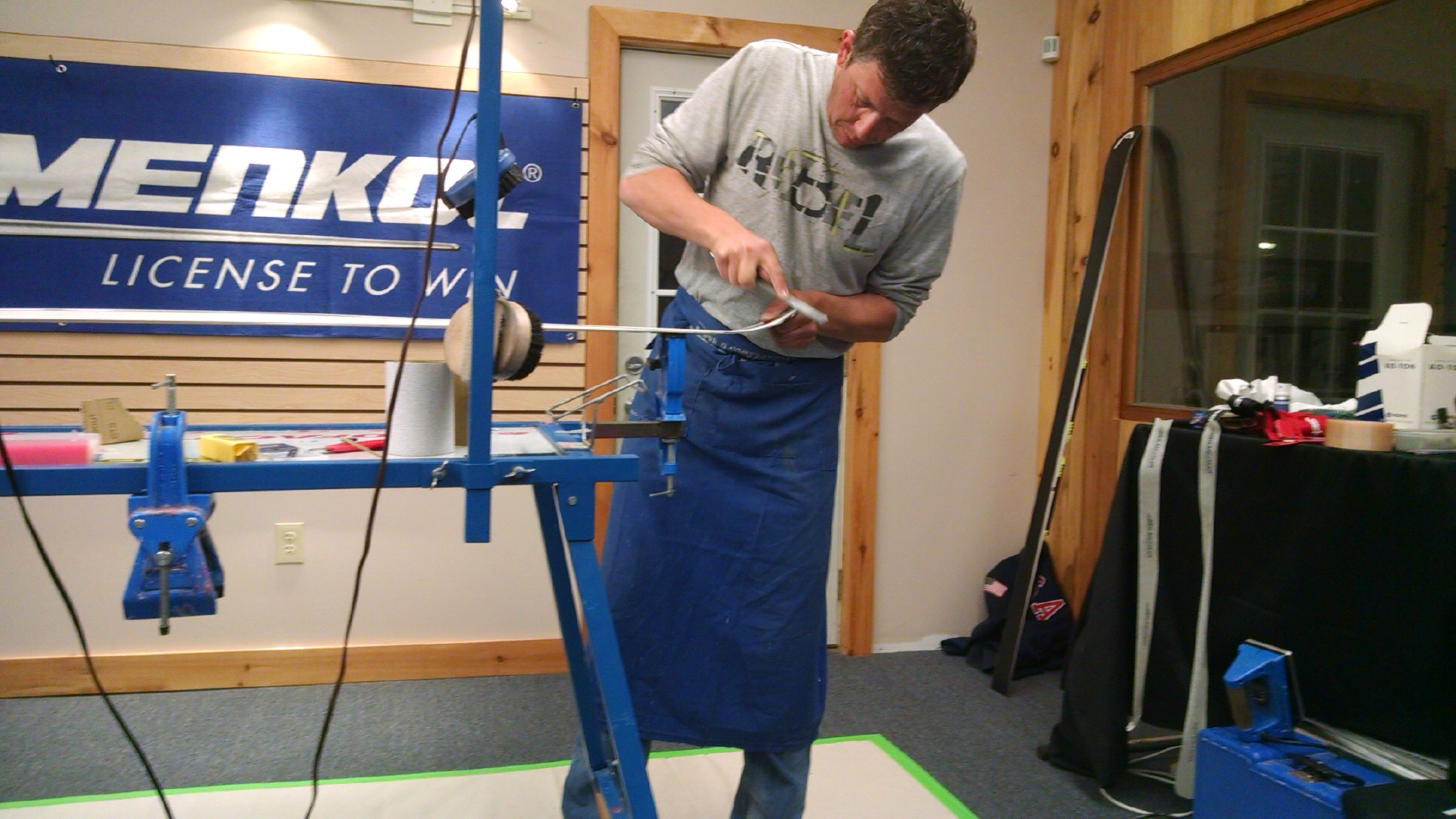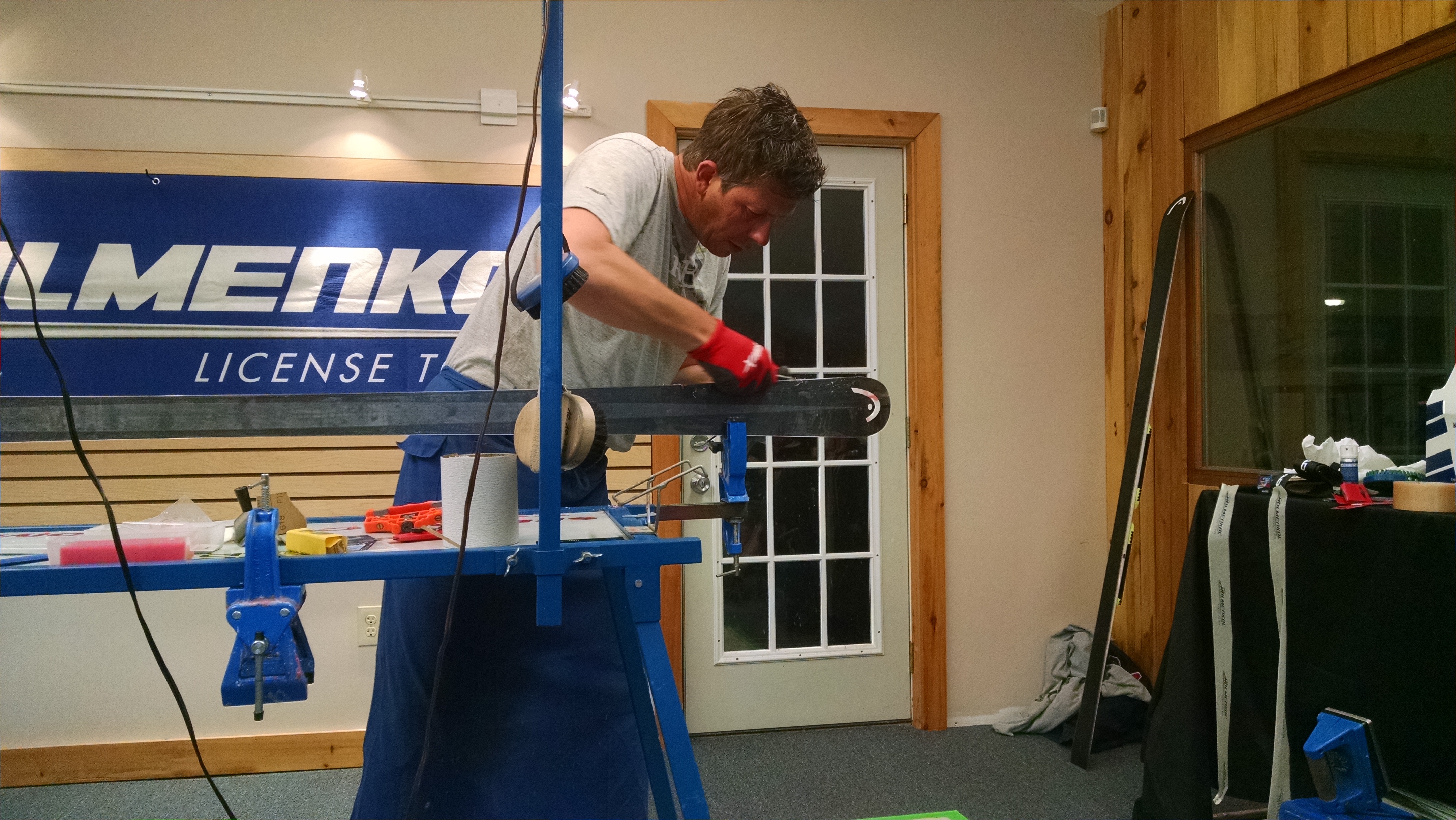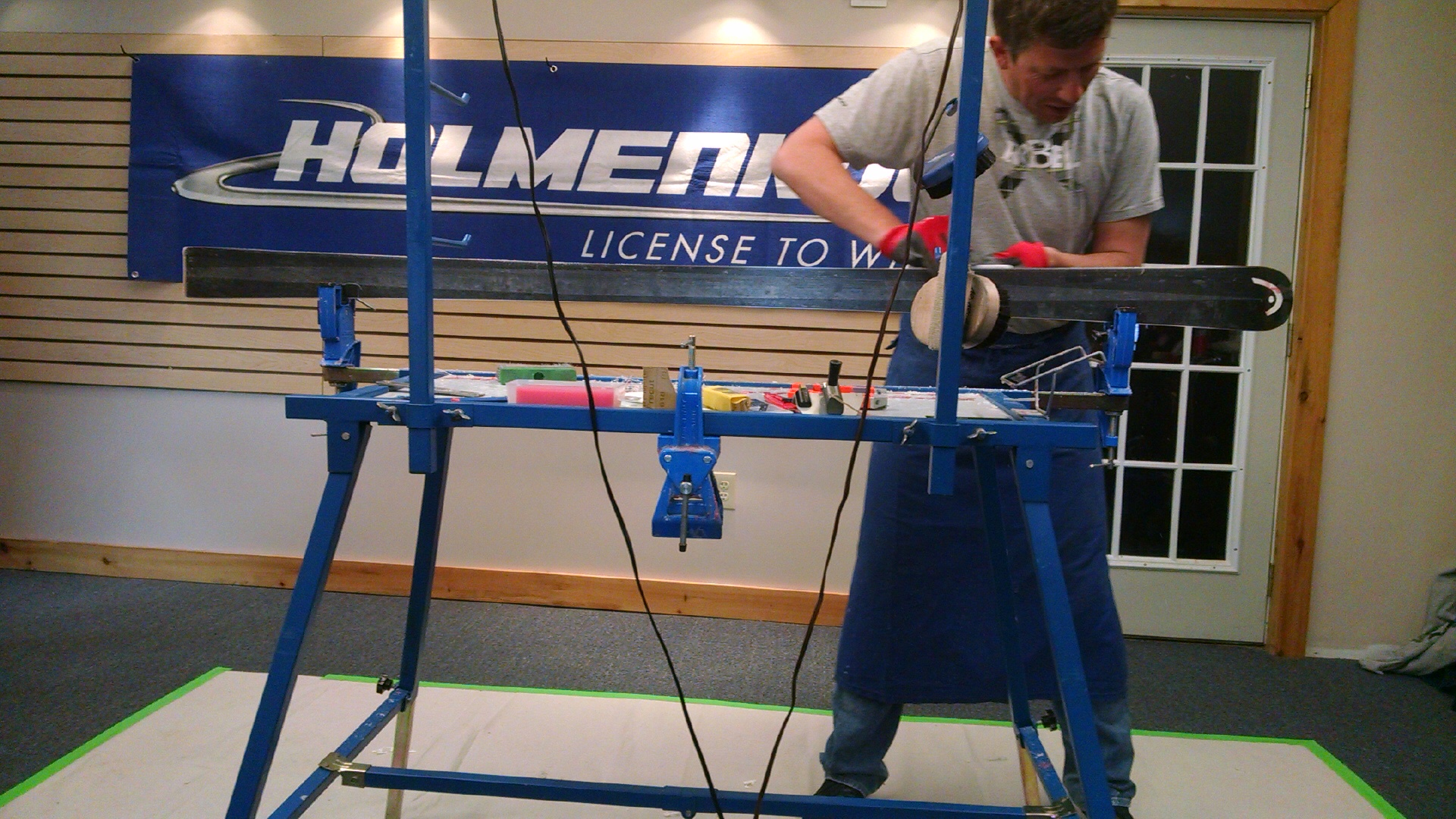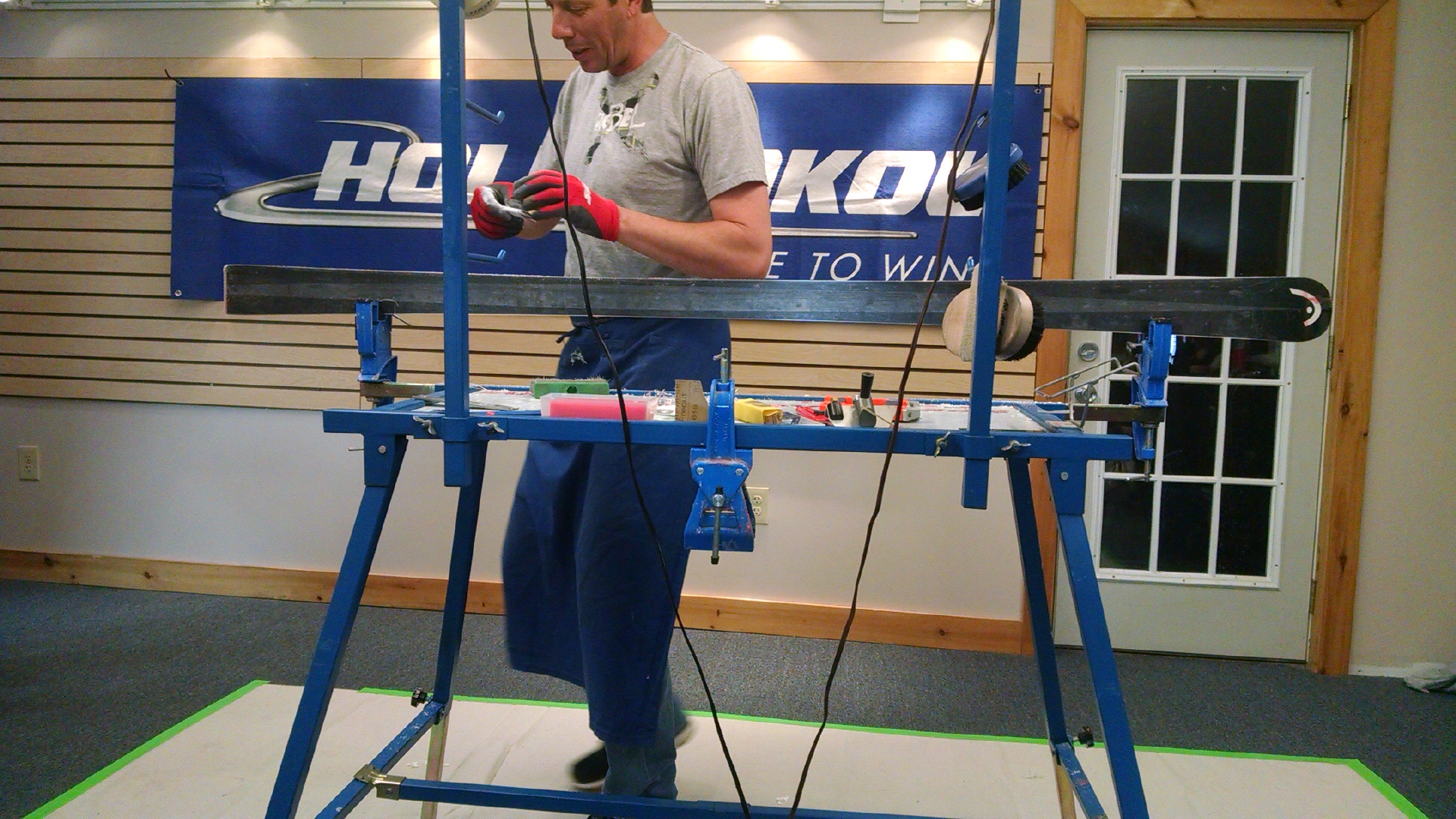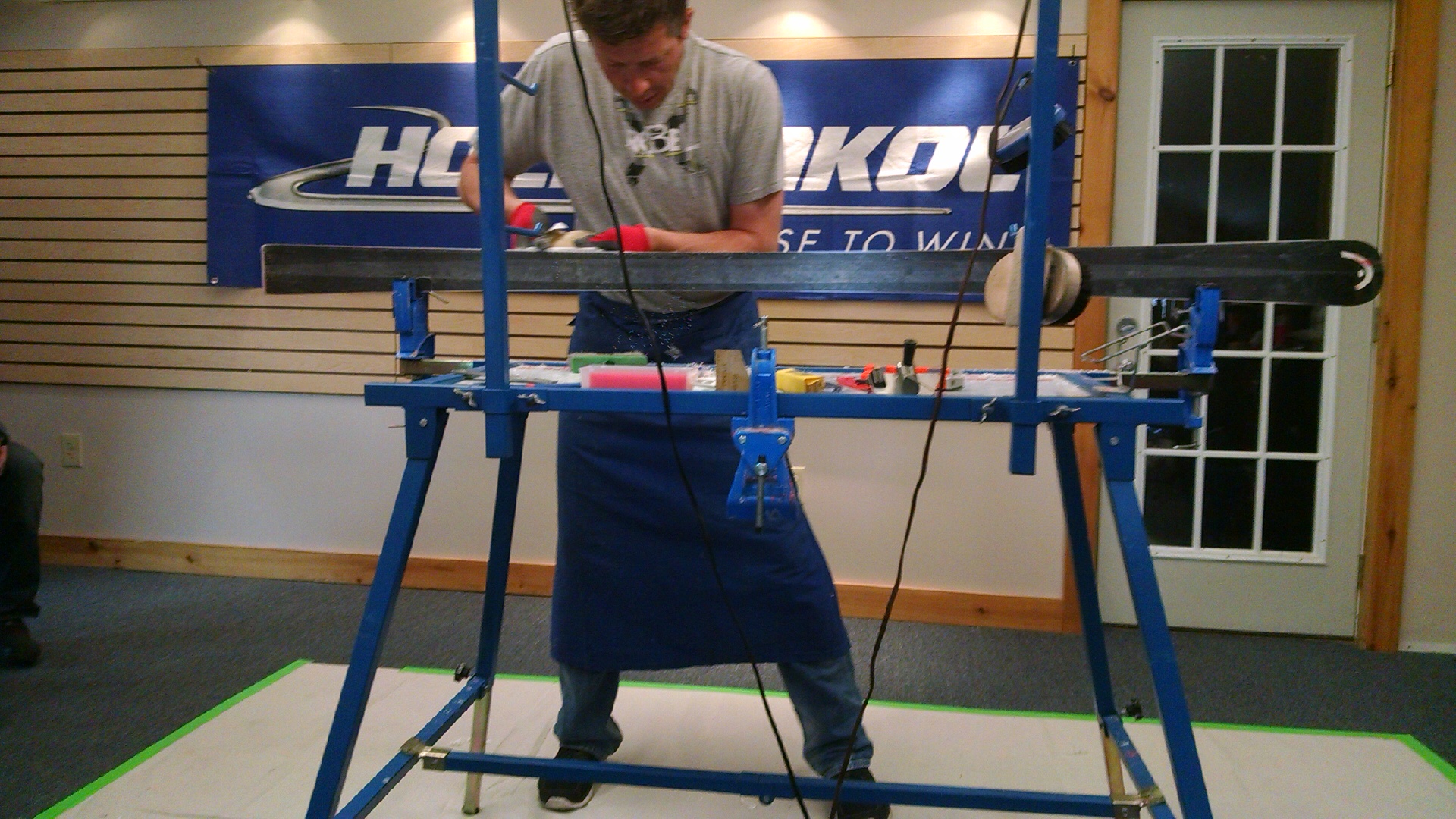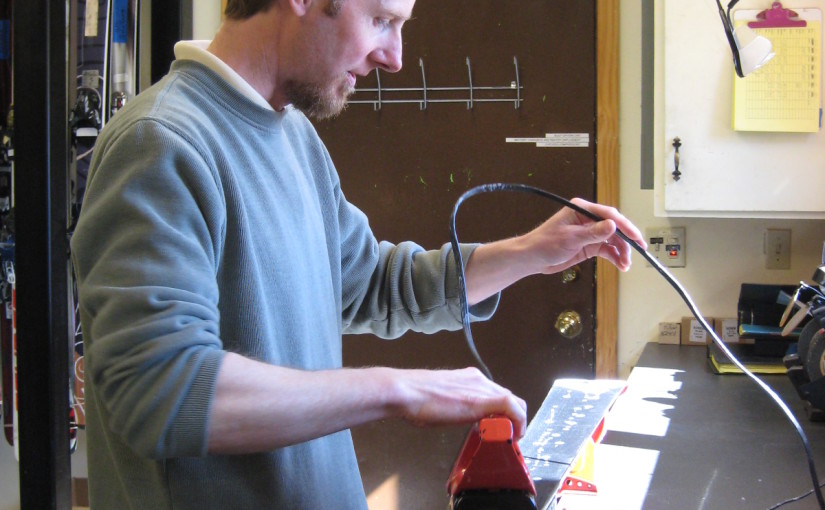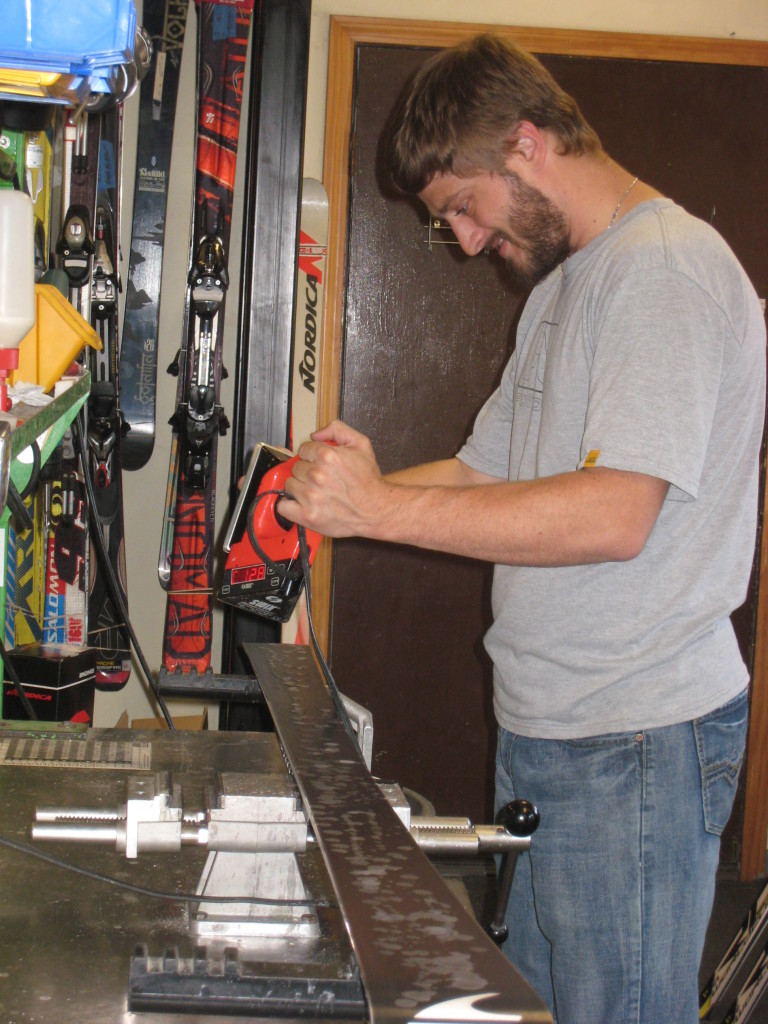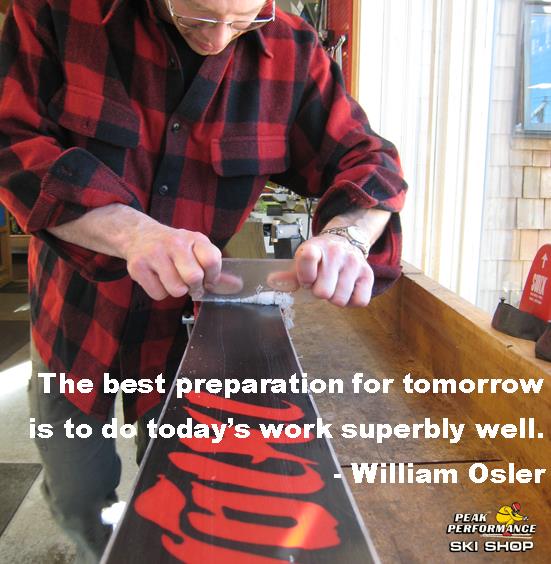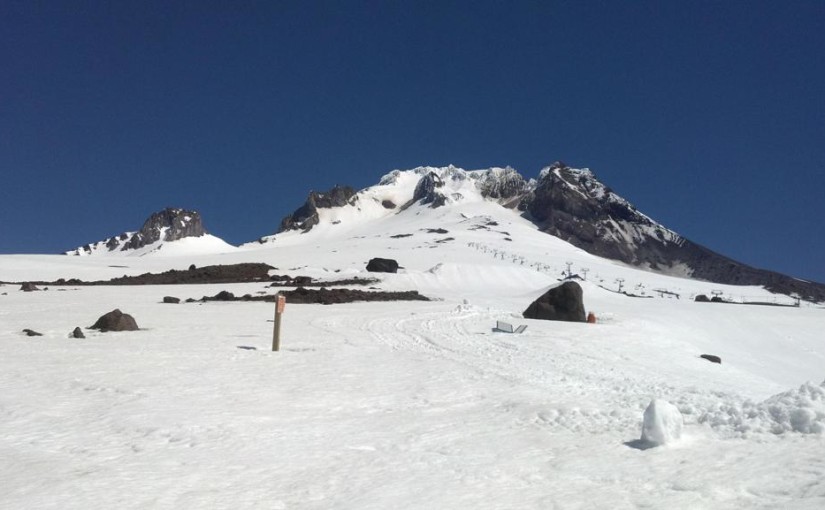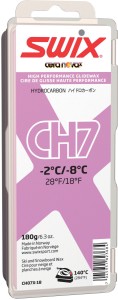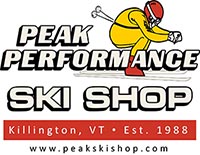Every new race ski needs prep work
You have taken the time to insure that you or your child has the proper race skis to give them the best shot at a successful ski racing season, but what do you do about tuning? Forget what some ski company rep or even your coach has told you – from the factory every new race ski needs prep work before racing. Some companies prepare skis to a higher standard than others. We check every single race ski that we sell. This is what we have found:
Junior Race Skis come from the factory at a 1 degree base bevel and the side angle listed on the chart above, except Fischer Jr race skis— which come at .5 degree base angle for SL skis, .7 degree base angle for GS skis and 3 degree side angle for both.
Universally, Ski Company Race Departments and Peak Performance Ski Shop recommendations for base angles on race skis for advanced to high level racers (USSA and FIS) is:
SL Skis: .5—.7 degree base, 3 degree side
GS Skis: .7 degree base, 3 degree side
Super G Skis: 1 degree base, 3 degree side
To reduce base bevel on skis from the factory setting requires grinding the base to flatten the ski. At Peak Ski Shop, once the ski base is flat we install a race specific event structure to the ski and set the base edge angle so that your ski is ready to race.
Peak Performance Ski Shop has 3 levels of service that is applicable for previously used or new race ski prep:
Premium Race Prep involves removing sidewall, installing 3 degree side angle and checking and polishing the base angle that the ski came from the factory with, and waxing the ski. This is used for most (U12 and younger) junior race skis and some adult skis where changing the base angle from the factory setting is not needed.
Elite Race Prep is used when we are reducing the base bevel of the skis. This is the minimum prep required to reduce base bevel. We remove sidewall, refinish the base, install event specific structure, install the correct base angle, install 3 degree side angle and one coat of wax. This is used for adult and junior race skis where we are changing the base angle and installing an event specific race grind.
World Cup Race Prep is our highest level of race ski tuning. We remove sidewall, refinish the base and install event specific structure, install correct base angle, install 3 degree side angle, sand sidewalls, shape top sheet on tips and tails and apply one coat of wax. World Cup Race Ski Prep is our most advanced race ski preparation. This is used for race skis that require a specialized ski prep that will allow the ski to glide and edge to its maximum ability. This prep contains all the steps of the Elite Race Ski Prep with the addition of sanding the sidewalls smooth and shaping of the tips and tails of the skis.
Once the new race ski prep is done to the base and sides, we offer 1 to 3 Hot Box cycles for SL, GS and speed event skis to further ensure your race skis are sliding on snow their best.
Give your ski racer all the tools they need to do the job right. Invest a small amount of money in new race ski prep and then follow-up with routine maintenance throughout the season to insure those new race skis ski their best from the day you buy them until you move them on to a new owner.
